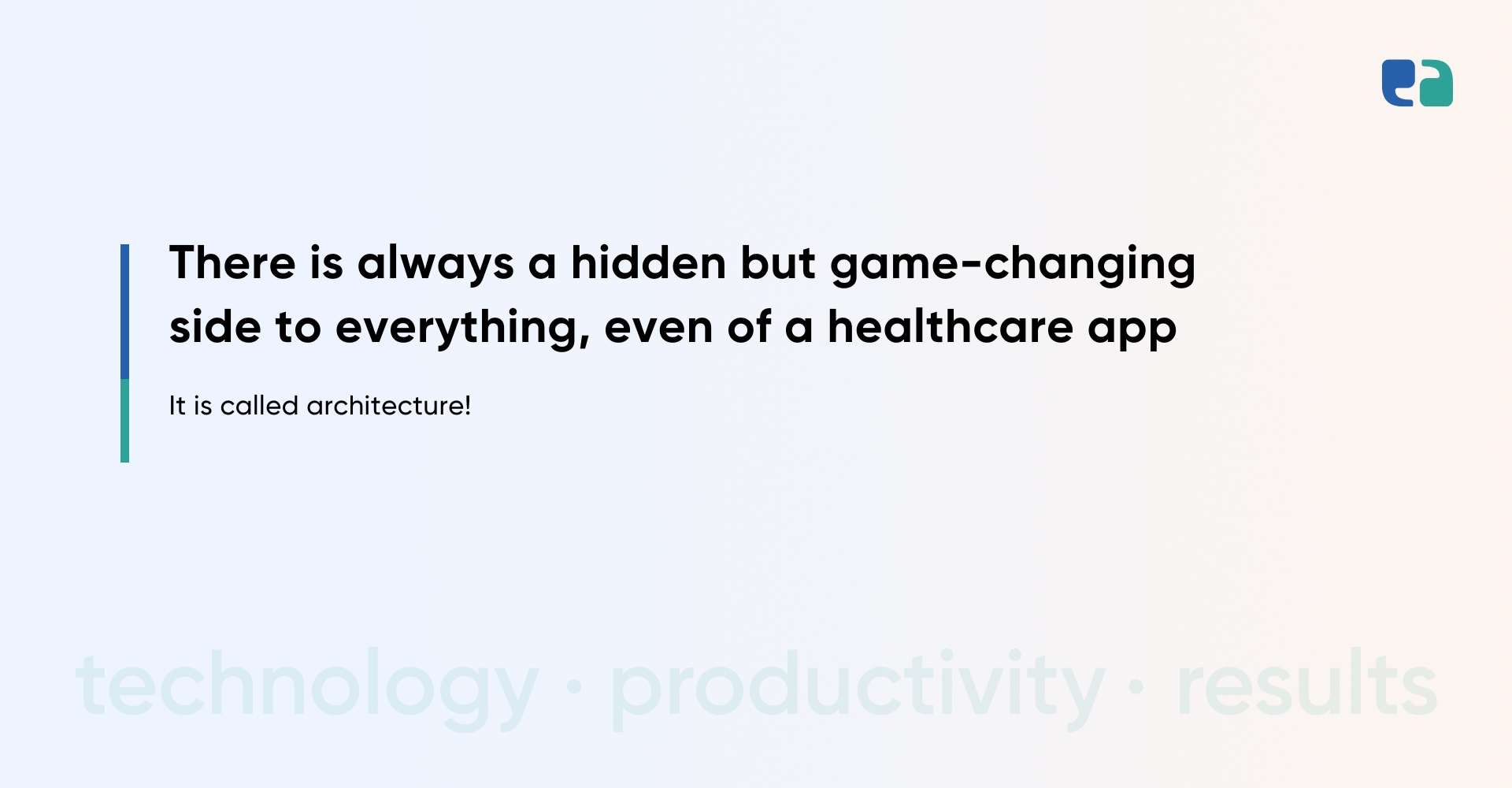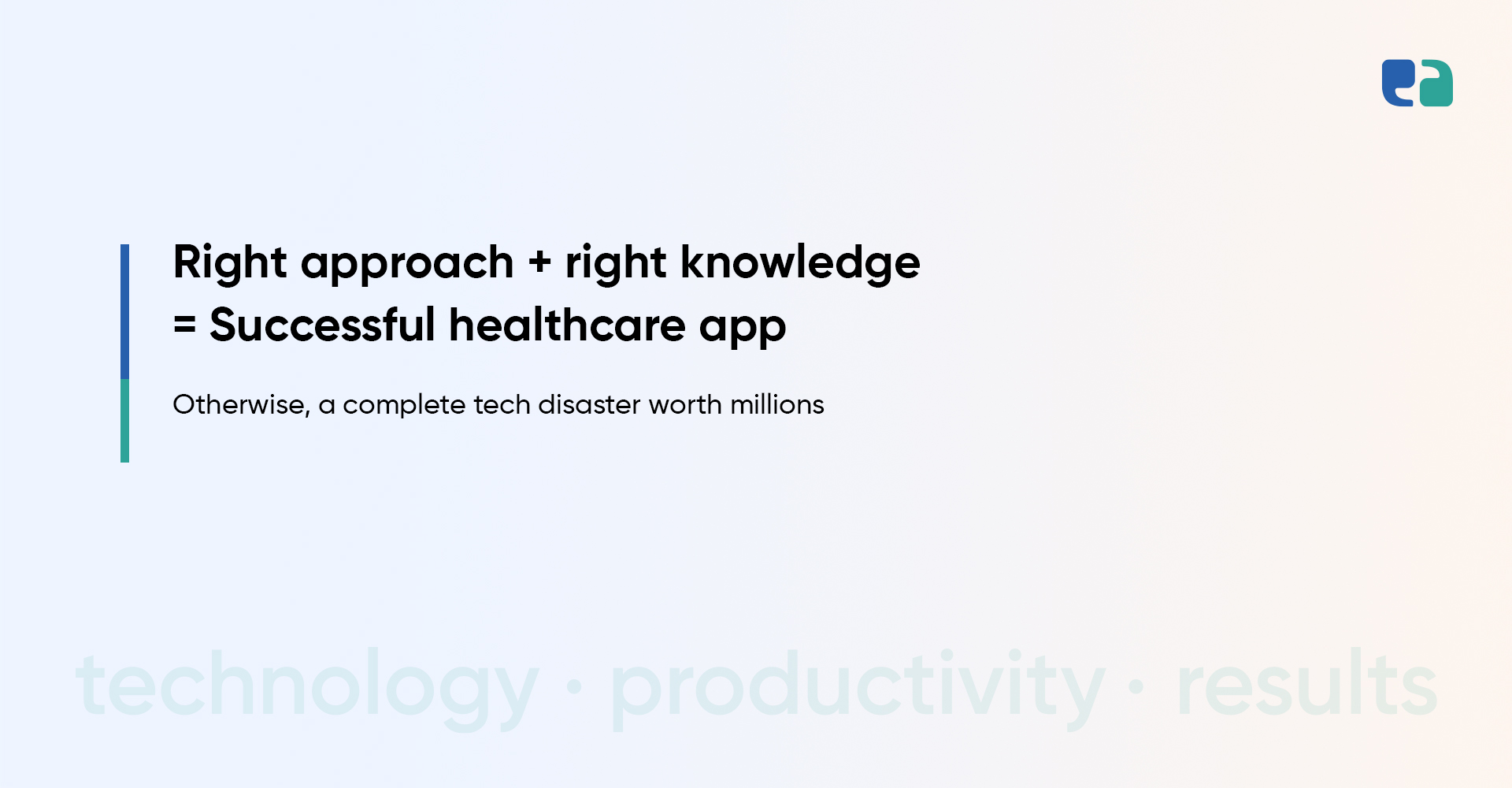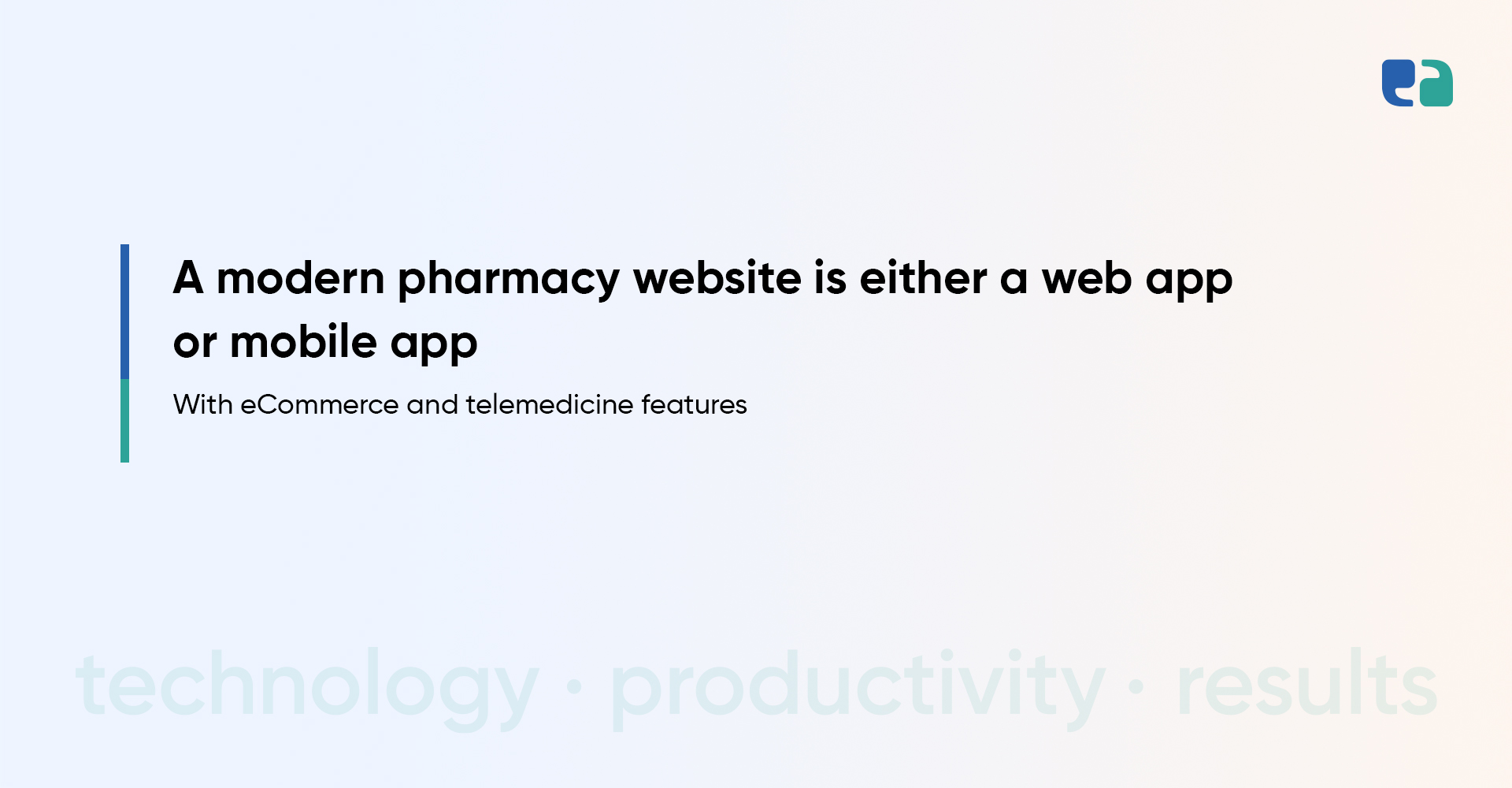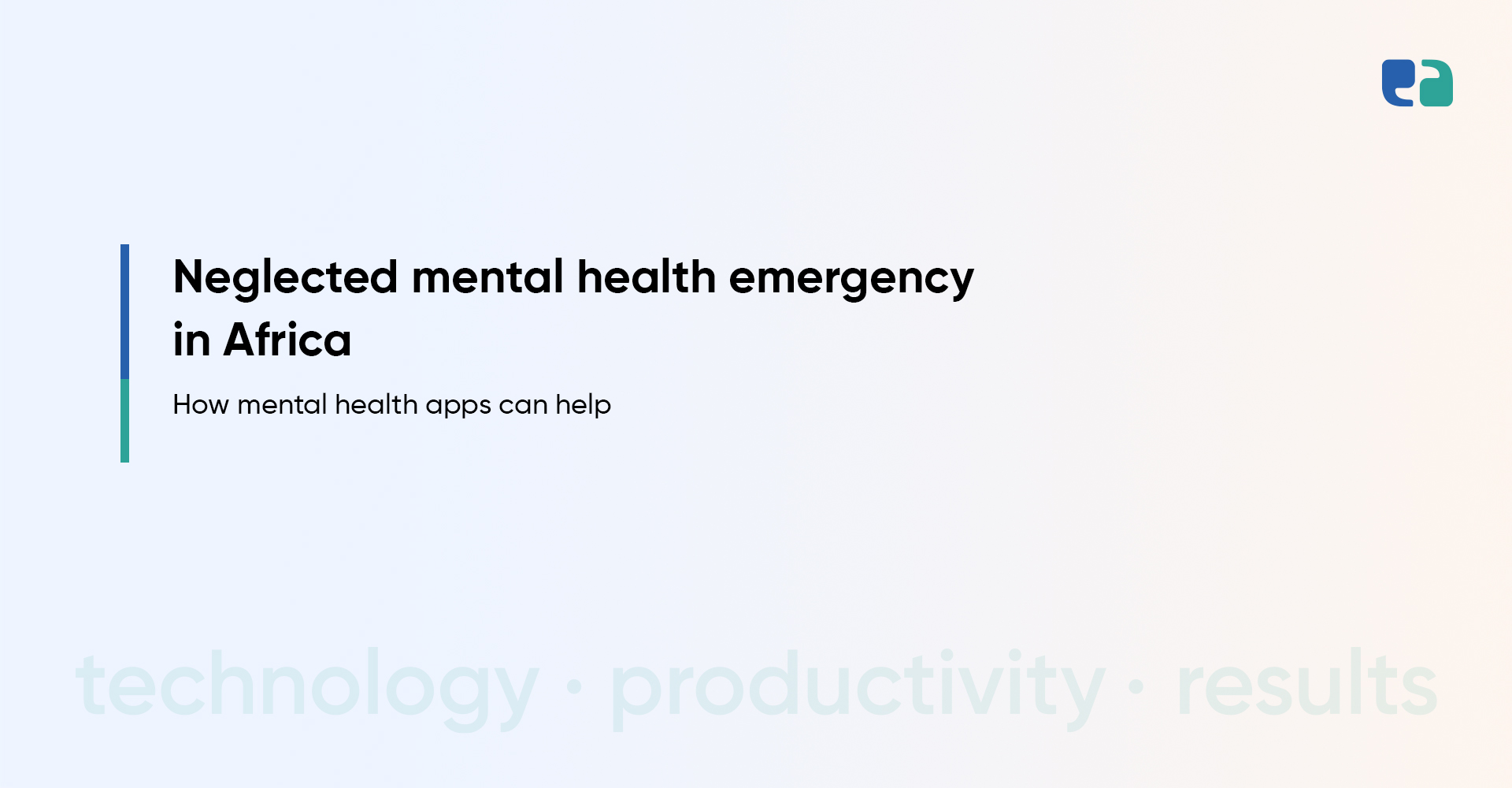To align itself with newly emerged market possibilities, healthcare apps have evolved greatly.
While the change is largely unnoticeable to every user, a lot happens on the backend of the new-age healthcare apps that deliver remarkable experiences.
Be it tech stack, performance, features, and architecture, the current versions of healthcare apps have very rare similarities with healthcare apps that used to be developed 5 years ago.
So, in this blog, we will discuss the two major healthcare app architecture models or practices – Microservices Vs. Monolithic which somewhere defines the success of your healthcare app.
Not only this but since the app architecture you select for your healthcare app largely influences the operating and developing cost of your app, you must have basic knowledge of it before approaching a company to build your dream healthcare project.
What is Healthcare App Architecture?
To understand it, you need to know how a healthcare app is built.
A healthcare app is made out of multiple services or modules.
These modules are generally divided into frontend and backend.
There is a database too.
For example, if you are building a telemedicine app, there must be frontend and backend modules or services for video calling, ePrescription, payment, appointment booking, etc.
Frontend generally deals with the user interface of app modules whereas backend deals with the business logic of app modules and a database.
To have a working app, you must interconnect all of these modules or put these modules together and deploy them on the server.
So, the pattern, practice, or architecture you follow to put these modules together with regards to how it processes the user request is called healthcare app architecture.
Based on the way you put these app modules together to later deploy on the server, there are major microservices and monolithic architecture.
Healthcare App Architecture Vs. Healthcare App Tech Stack
Several healthcare entrepreneurs lacking technical knowledge find themselves confused between healthcare app architecture and healthcare app tech stack.
Though both are crucial elements of successful healthcare app development, both are very different things.
Healthcare app architecture is more focused on defining how different app modules are bundled together to deploy on the cloud or server.
Whereas, the healthcare app tech stack is more focused on technologies that are used to build those app modules.
Tech stack generally includes programming languages, frameworks, APIs, 3rd party platforms, databases, cloud, OS, etc.
Monolithic Architecture for Your Healthcare App: The Working, Pros & Cons, and the Best Time to Choose It
Monolithic architecture is one of the traditional ways to build a mobile app.
It is like putting all eggs into one basket!
Here, ‘mono’ means single and ‘lithic’ means stone.
Thus, monolithic means one giant rock, box, or container which contains everything of your application.
But with the rising complexity of mobile apps, monolithic architecture somewhere fails to meet performance and scalability requirements.
A monolithic app does have all modules built and bundled as a single unit.
In other words, all modules of the monolithic app are tightly coupled to each other or have very high dependencies on each other.
By saying tightly coupled, what we are trying to say is, every module of the app resides in a single instance of the server.
As you can see from the following diagram, all modules of the telemedicine app are bundled together and placed together in a tightly coupled manner as a single codebase and use the same database even though they have different functionalities.
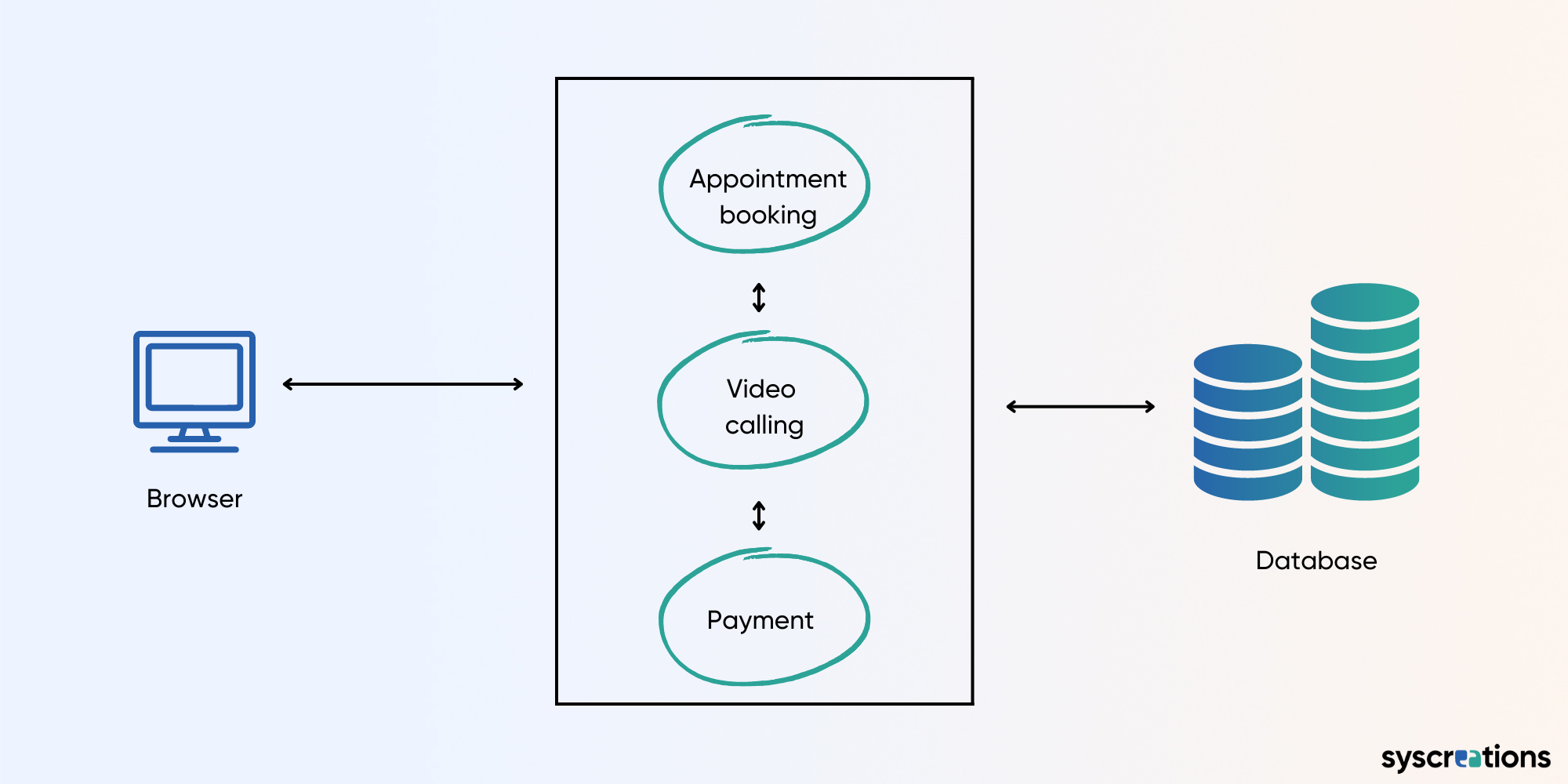
Since everything is interconnected and tightly coupled, you need to either update the entire stack with access to the entire codebase in order to make changes in one of its modules or you cannot update any module ever.
For example, if you want to update the payment module of the app, you need to have access to the entire app’s codebase and need to redeploy the app as a whole after making changes in the payment module.
The worst part is that when you are updating the payment module, the performance of all other modules also gets affected as nothing works independently, everything is a single unit.
For basic applications, monolithic architecture works best as everything can be deployed at once in a single shot and can also be managed with ease.
But for applications that are complex in nature and demand extreme performance and scalability, monolithic architecture is not an answer because of the lack of individual scaling and flexibility.
Microservices Architecture for Your Healthcare App: The Working, Pros & Cons, and the Best Time to Choose It
So now when you know everything about monolithic architecture, let us explain microservices architecture by comparing it with the former one.
Unlike monolithic architecture, you are not putting all eggs into a single basket when it comes to microservices.
Instead, what you do is, break down your entire application into small services and these services have very less dependencies on each other or are very loosely coupled.
That does not mean that these services cannot interact with each other.
Yes, they can interact with each other but they work as independent services.
As you can see in the following image, some different services or modules are deployed separately with separate databases.
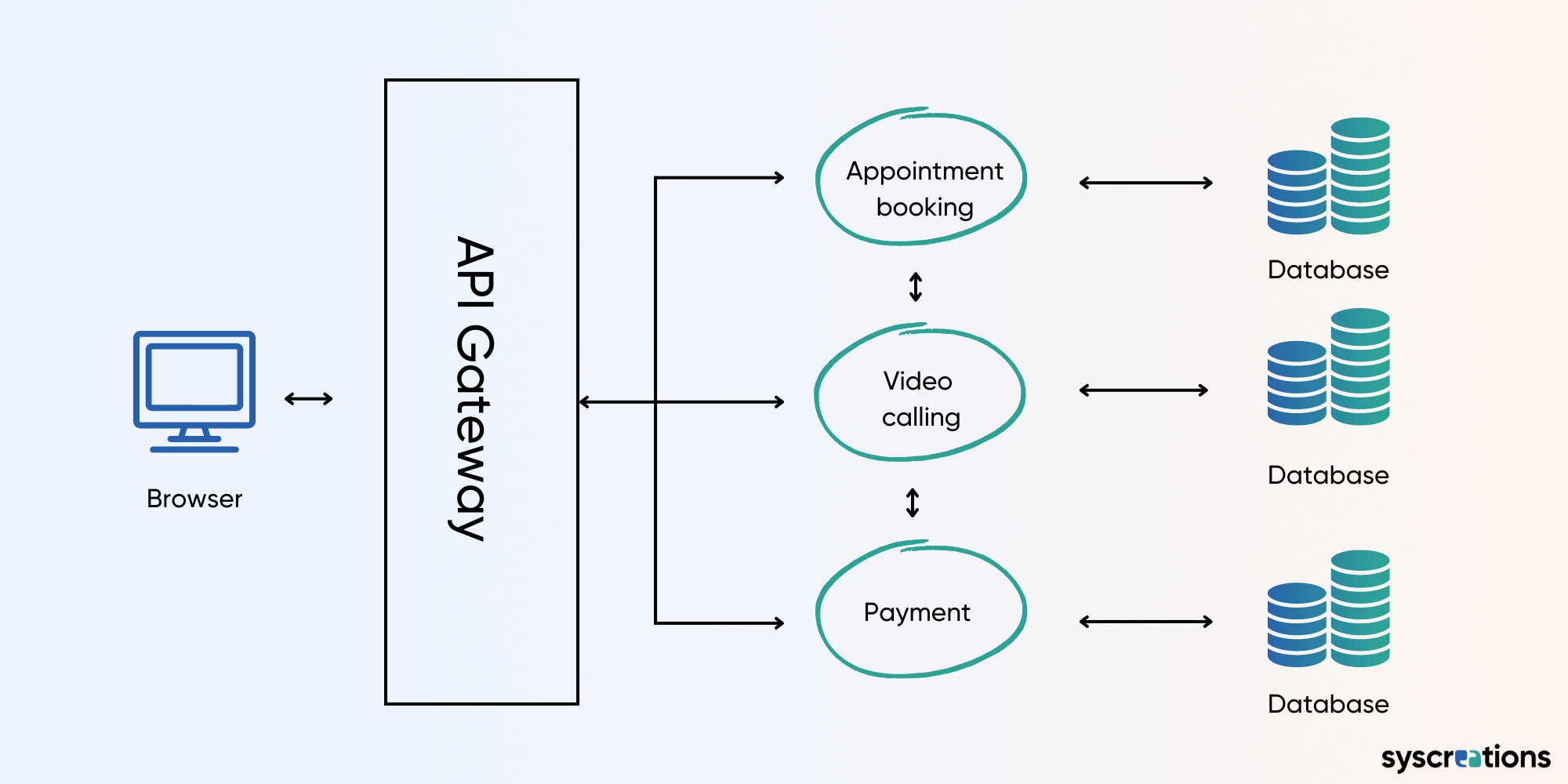
Since every module is deployed separately, it is important to route user requests to related services/modules.
For example, if a user is requesting for appointment booking, his/her user request must be sent to the appointment booking module of the app.
And here is where API Gateway comes into the picture.
It acts as an entry point.
It understands the type of user request and based on it, it routes that request to a particular service or module which is supposed to process that request.
Sit, relax, and Witness Your Dream Healthcare Project Taking Shape!
Under a pro team of healthcare CTOs, developers, app architects, and DevOps engineers.
We’re an Ontario-based healthcare IT company.
It has been 8+ years since we have been dealing with healthcare apps and software development 8 hours a day for 5 days a week.
Being a healthcare-specific IT company, we think, talk, discuss, execute, and brainstorm only healthcare IT.
Such a level of madness over healthcare helps our healthcare clients to accomplish the impossible with modern healthcare solutions.
Whether you want to migrate your healthcare app from monolithic to microservices architecture or build one fresh app or software from scratch, we have experts, experience, and expertise.
Our developers are known for bringing American standards of innovation and Canadian standards of quality into whatever we build.
So, let’s have clear conversations about your healthcare app vision and how we can make you see it coming to life – with our deadly passion for healthcare excellence and innovation!
